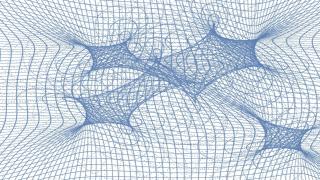Bibcode
Motta, V.; Mediavilla, E.; Falco, E.; Muñoz, J. A.
Referencia bibliográfica
The Astrophysical Journal, Volume 755, Issue 1, article id. 82 (2012).
Fecha de publicación:
8
2012
Revista
Número de citas
56
Número de citas referidas
52
Descripción
We report on a program of spectroscopic observations of gravitationally
lensed QSOs with multiple images. We seek to establish whether
microlensing is occurring in each QSO image using only single-epoch
observations. We calculate flux ratios for the cores of emission lines
in image pairs to set a baseline for no microlensing. The offset of the
continuum flux ratios relative to this baseline yields the microlensing
magnification free from extinction, as extinction affects the continuum
and the lines equally. When we find chromatic microlensing, we attempt
to constrain the size of the QSO accretion disk. SDSSJ1004+4112 and
HE1104-1805 show chromatic microlensing with amplitudes 0.2 <
|Δm| < 0.6 and 0.2 < |Δm| < 0.4 mag, respectively.
Modeling the accretion disk with a Gaussian source (Ivpropexp (- R
2/2r 2 s )) of size rs
vpropλ p and using magnification maps to simulate
microlensing, we find rs (λ3363) = 7 ± 3
lt-day(18.1 ± 7.8 × 1015 cm) and p = 1.1
± 0.4 for SDSS1004+4112, and rs (λ3363) = 6
± 2 lt-day(15.5 ± 5.2 × 1015 cm) and p =
0.7 ± 0.1 for HE1104-1805. For SDSSJ1029+2623, we find strong
chromaticity of ~0.4 mag in the continuum flux ratio, which probably
arises from microlensing, although not all the available data fit within
this explanation. For Q0957+561, we measure B - A magnitude
differences of 0.4 mag, much greater than the ~0.05 mag amplitude
usually inferred from light-curve variability. It may substantially
modify the current interpretations of microlensing in this system,
likely favoring the hypothesis of smaller sources and/or larger
microdeflectors. For HS0818+1227, our data yield possible evidence of
microlensing.
Proyectos relacionados

Astrofísica Relativista y Teórica
El estudio de las lentes gravitatorias proporciona poderosas herramientas en Astrofísica y Cosmología. Las principales aplicaciones de las lentes gravitatorias en las que se centra este proyecto son las siguientes: (i) estudiar la presencia de subestructura de materia obscura en las galaxias lente a partir de las anomalías en la magnificación de
Evencio
Mediavilla Gradolph